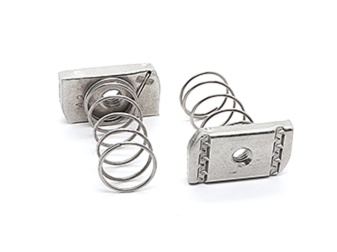Dec . 20, 2024 22:15 Back to list
316 stainless steel all thread rod
Understanding 316 Stainless Steel All Thread Rods
316 stainless steel all thread rods are critical components in construction, manufacturing, and various industrial applications. Renowned for its excellent corrosion resistance, strength, and versatility, 316 stainless steel is an alloy primarily composed of iron, chromium, nickel, and molybdenum. This unique composition grants the material superior properties suited for both indoor and outdoor environments, especially where the presence of harsh chemicals or saline conditions is a concern.
Corrosion Resistance One of the most notable features of 316 stainless steel is its remarkable ability to withstand corrosion. The addition of molybdenum enhances its resistance to pitting and crevice corrosion, making it an ideal choice for marine environments and chemical processing. In applications where exposure to chloride-rich environments is frequent—such as in coastal construction—316 stainless steel all thread rods provide durability and longevity, effectively reducing the risk of premature failure and maintenance costs.
Mechanical Properties 316 stainless steel boasts impressive mechanical properties. With a yield strength of around 290 MPa and tensile strength nearing 580 MPa, it can handle substantial loads without deforming. This makes 316 stainless steel all thread rods suitable for heavy-duty anchoring and fastening applications. Furthermore, they maintain their strength and stability even at elevated temperatures, further broadening their applicability in various atmospheric conditions.
316 stainless steel all thread rod

Versatility The versatility of 316 stainless steel all thread rods makes them indispensable in numerous industries. They are extensively utilized in the construction of bridges, buildings, and warehouses, where structural integrity is paramount. Additionally, they are commonly employed in the food and beverage industry, where hygiene and resilience against corrosion are critical. The pharmaceutical sector also favors 316 stainless steel for equipment and fittings, ensuring that contamination is kept to a minimum.
Installation and Use Installing 316 stainless steel all thread rods is typically straightforward, requiring standard tools and techniques. They can be cut to specific lengths and threaded to meet various application requirements. The rods can be coupled with different types of nuts and washers, allowing for adaptable fastening solutions. When using these rods, care should be taken to employ compatible materials, especially in environments where dissimilar metals may come into contact, to avoid galvanic corrosion.
Environmental Impact As the world moves toward more sustainable practices, the environmental footprint of materials used in construction and manufacturing is garnering increased attention. 316 stainless steel is often recyclable, contributing to its appeal in eco-conscious projects. Its longevity and durability also mean less frequent replacements, further reducing waste over time.
Conclusion In summary, 316 stainless steel all thread rods offer a robust solution for various fastening and anchoring needs across multiple industries. Their resistance to corrosion, impressive mechanical properties, and versatility make them a preferred choice for professionals looking for quality and reliability. Whether in marine, industrial, or construction applications, 316 stainless steel all thread rods stand out as a dependable resource that meets the demands of modern engineering while considering environmental sustainability. Investing in these rods is not just about immediate functionality; it is about ensuring long-term success in a variety of applications, making them a critical component for anyone in need of durable and reliable fasteners.


